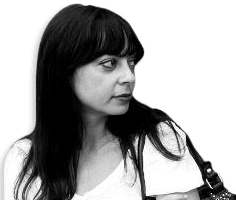Martyrdom was one of the greatest wishes of Iranian Basij member Mohammad Hassan Rasoul Khalili. In the words of his father, "this world was like a cage to him."
Khalili, a devotee of Iranian Supreme Leader Ayatollah Ali Khamenei, finally achieved his death wish last year in Syria, when a bomb he was trying to defuse exploded.
Khalili, 27, was among a number of Iranians who have joined the fight in Syria against rebels and the extremist Islamic State (IS) group.
Figures are not available. Every now and then news of their deaths and large funerals pops up on Iranian news agencies and hard-line blogs that refer to them as the "defenders of the Sayeda Zeynab shrine," while claiming that they had traveled to Syria voluntarily. The shrine, located in the southern suburbs of Damascus, is a holy site for Shi'a around the world.
But a documentary about Khalili recently posted on a hard-line Iranian website offers greater-than-usual detail about one of the Iranians who have joined the fight in Syria.
The documentary, titled "Abou Khalid," one of Khalili's noms de guerre, includes interviews with those who knew him, including his parents and friends. They all speak in glowing terms about the young man, who according to their accounts, was involved in the 2009 state crackdown on opposition activists who took to the streets to protest the disputed reelection of President Mahmud Ahmadinejad.
They remember him as a deeply religious, brave, active, social, and fun individual who was deeply devoted to Fatima, the daughter of the Prophet Muhammad, and who was eager for martyrdom.
Khalili, they say, was at the forefront of the war on "seditionists," meaning members of the opposition Green Movement. "In 2009, Rasoul was in the middle of the streets; when I say 'in the middle' I mean he was a flag-carrier," says one of his friends.
Khalili's father says his son defended the establishment and failed to come home for a week during those days.
Khalili's friends say he was trained by the Basij force as a bomb-disposal technician. He had joined the paramilitary when he was just 13. It is not clear from the documentary whether the Basij force had facilitated Khalili's presence in Syria.
His mother says that during his first travels to Syria, he was assigned an office job. But she says the war front was where Khalili wanted to be. And according to the documentary, he later made it to the battleground.
Khalili had traveled to Syria when conditions were very bad, says an unidentified man who is obscured in the documentary. "We saw everything as leading to martyrdom [then]," he says.
The man says he befriended Khalili in Syria. He says the war in Syria is very difficult and different from Iran's bloody eight-year war with Iraq.
In pictures posted on the hard-line Mashreghnews site, Khalili is seen holding an IS flag, reportedly in Aleppo. The website says the picture was taken after Khalili and his fellow fighters had managed to free parts of Syria from IS militants. The website doesn't say when the picture was taken.
Khalili had traveled to Syria several times as a volunteer to fight supporters of "American Islam," "Saudi mercenaries," and also to defend the Zeynab shrine, according to hard-line Iranian news sites.
He was reportedly killed on November 18, 2013. A friend of Khalili said the young man had tried to defuse a bomb after forces of the Lebanese Hizballah and Syrians failed to do so.
The documentary says that it took three days to bring his body back to Iran because of the location where he died –- where transfer during the day was not possible -- and also bad weather conditions that prevented a helicopter from taking off.
According to Khalili's friends interviewed in the documentary, the young man was buried in a cemetery where other Iranian "contemporary martyrs" have been laid to rest, including senior Islamic Revolutionary Guards Corps (IRGC) commander Hassan Shateri, who was killed in Syria in February 2013.
In an interview with a conservative website, Khalili's mother says if her sons and others did not defend holy sites in Syria, those involved in "crimes" there would soon attack Iran.
Reports say Iran provides its main regional ally Syria with financial aid and military advisers. Tehran has denied reports that its IRGC forces are directly involved in the fighting in Syria.
Video footage released in September by Syrian rebels appears to show Persian speakers in military fatigues fighting alongside forces of Syrian dictator Bashar al-Assad.
-- Golnaz Esfandiari






